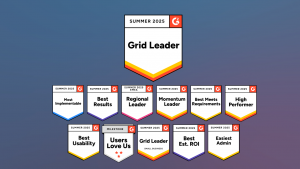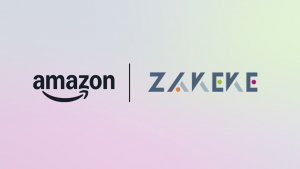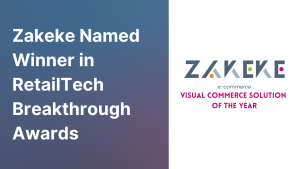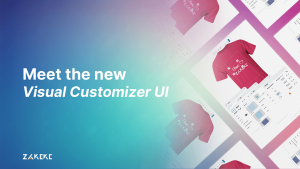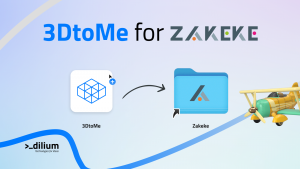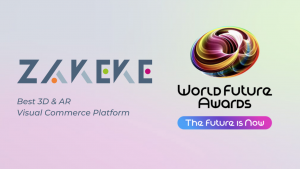In a world where customers are looking for increasingly personalized experiences, finding a way to meet their requests is nothing short of fundamental.
Imagine a world where every consumer can purchase a product that is perfectly tailored to their needs. Well, it’s here to stay! Customers are looking exactly for these experiences. How to meet their expectations?
A company, as we well know, must deal with costs. Personalizing a product means dedicating more time to its creation. How to get profits if more time and more resources are needed to produce your items?
Let’s talk about mass customization! Who said that offering a personalized experience to your clients necessarily means more time spent working, more resources, and less profit? Let’s dive into the topic!
What Is Mass Customization?
If we’re discussing the meaning of mass customization, it can be defined as a process that provides customers with customized, tailored products (meeting their specific needs), while leveraging the economies of scale typical of mass production.
In simpler terms, mass customization allows merchants to offer tailored products to each customer, yet keep the costs per unit low and efficiency high. Typically, we might assume that customized products are limited to small-scale, high-cost production. However, with mass customization and new t, personalization is made widely accessible, blending adaptability and customization with a cost-effective advantage for businesses.
Different Types Of Mass Customization
There are 4 distinct types of mass customization. Let’s explore what they are:
- Adaptive Customization: The company sells a product that can be modified in its components based on a set of predefined choices. The customer purchases the product and can modify it repeatedly as they use it;
- Collaborative Customization: Companies provide customers with a range of product options to choose from. The final product is the result of the customer’s choices and is then produced by the company. To achieve this type of personalization, the company must use specific product customization software that allows the customer to personally create their product;
- Cosmetic Customization: This involves exclusively external personalization. The core product remains the same, but the way it is presented or packaged for different customers is customized (custom packaging: color, images, etc.);
- Transparent Customization: This is an invisible form of customization from the customer’s point of view, as the company doesn’t declare that the product is personalized. However, it has been designed and tailored based on prior analysis of customer behavior (to do this, the company must have realistic data).
What Are The Main Benefits Of Mass Customization?
Now that we know what mass customization is, let’s look at its main advantages:
- Personalized products improve Customer Experience and happiness, meeting customers’ needs and boosting loyalty to the brand;
- Mass customization allows for personalized products without raising production costs, benefiting the company and showing that personalization doesn’t have to be expensive;
- Offering unique products gives a company a big competitive advantage, aligning more with what customers want;
- Selling customizable products often leads to increased sales. Customers love buying unique items that they have a hand in creating, exactly what they’re looking for!
- Customers are generally willing to pay more for custom products, and companies can earn more by leveraging this factor.
Leveraging Mass Customization in Marketing
As we’ve already mentioned, personalization can secure significant advantages for a brand. But let’s talk about customization in marketing: why can mass customization prove to be a real winning weapon in terms of marketing & sales?
- Increases sales: consumers are more attracted to personalized products. Imagine offering a customizable product that the customer can even design themselves. Isn’t that exactly what your clients are looking for?
- Increases customer satisfaction, making the Customer Experience more engaging and interactive and leading customers to loyalty;
- Increases engagement, because the personalization experience is more engaging and immersive and makes customers a part of the product creation process itself;
- Increases profits, because customers are willing to pay 20% more for custom products (Deloitte).
Challenges Related To Mass Customization
It’s not all advantages; unfortunately, the world of personalization also presents its challenges. Let’s look at the 3 most common challenges associated with customizing products:
- Production Costs: To achieve low production costs, relying on the right technologies and software is essential. Investing in a robust customization software helps maintain advantageous production costs by automating operations and optimizing resources;
- Long Lead Times: Selling a customized product may involve longer production times and negotiations over the product’s features. Again, choosing the right technologies is crucial to avoid this issue;
- Back-and-forth with Customers: Creating a product that meets the customer’s exact needs can lead to lengthy exchanges of messages and opinions to define the design. The right software can also be helpful in this case to prevent this problem.
In the end, balancing challenges with opportunities, we can say that customization is a significant opportunity that businesses have to leverage now. Offering customizable products allows businesses to differentiate, innovate, and improve their results – all crucial elements for standing out in today’s competitive market.
Examples Of Mass Customization
Mass product customization isn’t just a trend, it’s a transformative strategy reshaping industries by aligning production with individual customer preferences at scale. This approach is a compelling proposition for merchants aiming to differentiate themselves in a competitive market.
Let’s explore some mass customization examples and discover how various industries are harnessing the power of this technology:
- Fashion & Apparel: This industry is redefining retail by offering made-to-order clothing. As a merchant, offering options for fabric, design, and fit can significantly boost brand loyalty and cut down on surplus stock;
- Automotive: The automotive sector is setting a new standard by allowing extensive customization. For merchants, this means providing a unique value proposition, letting customers design their custom car from the engine to the upholstery;
- Footwear: Footwear companies offering customization in colors, materials, and designs are stepping ahead of the competition. This approach not only meets customer style and comfort needs but also reduces the risk of overproduction;
- Furniture: Tailoring furniture to customer specifications for size, color, and design can significantly increase market appeal. As a merchant, offering customizable furniture can set your brand apart and cater to the individual’s unique living space and style;
- Jewelry: The jewelry industry’s move towards comprehensive customization allows merchants to offer unique value. Beyond simple engravings, customers can design products from scratch, choosing every detail to their liking;
- Gifts & Gadgets: In this industry, personalization drives sales. Offering customizable gadgets and gifts enables merchants to cater to the individual tastes and preferences of their customers, making each product special and sought-after;
- Sporting Goods: Customization in sports equipment and gear allows merchants to meet specific athletic needs and preferences. This not only enhances performance and comfort for the customer but also sets your brand apart in a crowded market.
For merchants, embracing mass customization is about understanding and meeting the unique needs of each customer, thereby fostering loyalty and setting your brand apart in today’s dynamic market. The ‘one size fits all’ approach is fading, making way for a more personalized, customer-centric business model.
Mass Customization Strategy: How To Start?
Where should you start to implement mass customization? Here are some simple tips:
- Analyze the Current Situation: Before implementing a mass customization solution, carefully analyze the current situation of your company. This way, you can compare the results obtained and assess whether it is indeed a strategy to improve your performance;
- Set Clear Objectives: Define key objectives to monitor constantly, to evaluate the best solutions and technologies for achieving the goals you have set;
- Study Customer Behavior: Understanding your customers’ behavior is crucial. Knowing what they are looking for, what they would want from your brand, is one of the best ways to determine if customization can be a winning strategy for you;
- Use the Best Technologies: If you decide to implement a personalization solution, it needs to be effective. Compare the different technologies and software available on the market and choose the best one for your objectives and products;
- Leverage Automation: Automation is key to offering a personalized experience without overwhelming your team. Choose a solution that includes automation and is capable of streamlining your operations.
Starting With Customization in 1,2,3 with Zakeke
As we’ve mentioned, choosing the right technology and software to implement a personalization solution is key to success. Here’s a solution that allows you to offer 100% product personalization in just a few days, without significant investment and with a free trial period: Zakeke’s Visual Product Customizer!
Our cloud-based Product Customizer is the simplest way to start with product personalization. It’s the best solution for e-commerce stores that want to enhance their Customer Experience by offering customization without overwhelming their teams.
Why Zakeke?
- 1-click Plug&Play Integration: Easy integration with all major e-commerce platforms, from Shopify to WooCommerce. No IT skills required, no website slowdowns;
- User-Friendly: Easy to use for both merchants and customers;
- Unlimited Customization Options: Offers a wide range of customization options;
- Automation of Production Processes: Provides production-ready files, eliminating manual tasks and production errors;
- Adapts to Your Workflows: Seamlessly integrates into your workflows and processes, mastering every production technique;
- Not Only Customization: Offers real-time customization, 3D, AR, and Virtual Try-On features for a superior user experience;
- Pay-as-You-Grow Model: No hefty initial costs, making it budget-friendly.
Intrigued? You can try Zakeke for FREE now for 14 days or book a quick demo to learn more with the guidance of one of our experts.
Customization: Today’s Competitive Edge in Business
Thanks to new technologies and software on the market, personalization is no longer inaccessible for small businesses or requires hefty investments. It’s now accessible to everyone.
What does the future hold? The future is personalization. Consumers will become increasingly demanding, and businesses will need to adapt and leverage the available technologies to meet their expectations and stay on-trend.
For this reason, it’s not the time to wait! It’s time to get in the game and open the doors to the world of mass customization, tailoring it best to your business and the needs of your clients. The competitive advantage is gained now, not when everyone will offer personalization. It’s now that brands can truly stand out by riding the trend first.









